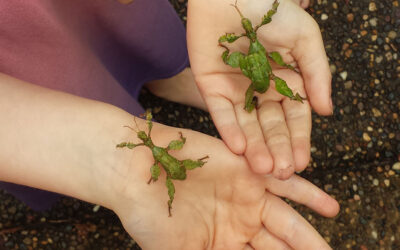WARNING: This article contains details of pregnancy and infant loss that some readers may find distressing.
Regardless of when it happens in your pregnancy, the pain of losing a child though miscarriage or stillbirth is real. Well-meaning words and emotions of guilt and shame can leave a woman feeling stripped raw, struggling to heal.
It is difficult to describe to others the pain of losing a baby during pregnancy. For the women (and men) experiencing the loss, it is a shock. For those around them, it can be struggle to understand this intangible seemingly ambiguous loss.
What often follows a miscarriage are well-meaning comments. “You can try again soon”, “It was nature’s way” or “It happens a lot” can lead to feelings of unacknowledged pain and invalidation. Feeling this way makes it hard to move on and heal.
Pregnancy loss is an ambiguous loss. Unlike other deaths, it is hard for a family or friends to understand what exactly has been lost. Some people question whether or not a loss has actually occurred.
For those who have experienced pregnancy loss, there can also be a level of confusion. Doubt sets in that there was a genuine loss, since it does not receive a high degree of social validation. This feeling is more common with first trimester losses. Losing an infant results in people sending flowers, cards and condolences, but if a baby is lost in utero the chances are no one will send cards or flowers.
Pregnancy loss is a real loss
In Australia, around 110,000 women experience miscarriage. More than 2,000 women endure the pain of stillbirth. Roughly 600 parents will lost their baby in the first 28 days after birth.
During this time it is critical to acknowledge the extent of the loss. It is a significant loss and grieving is a natural process.
Experiencing a miscarriage or stillbirth is a one of the loneliest things that can happen to a woman (and man). This is made even lonelier because as a society, it is not talked about enough. Occasionally women are blamed for the loss, as thought they did something wrong. The words people use do little to validate the grief felt. There is rarely any acknowledgement of what is now gone – a precious and much wanted baby.
This was the case for mother-of-two, Sherie Young. She says the lack of acknowledgement of her loss made her question whether to try and fall pregnant again.
“My partner did not understand,” Ms Young says. “He did not know what to say or do to comfort me. People around me tried, but unless they’ve gone through it themselves they never really understood how I was feeling. I looked at other women who carried their baby to term and envied them.”
Validation important to healing after miscarriage
There is no ‘normal’ recovery. What is the ‘correct’ response to losing a baby? Is there a right or wrong way? Why do we each respond so differently to similar situations?
A loss in the first trimester does not naturally result in less grief and pain, and a longer gestation doesn’t naturally result in more intense grief. There are many other factors that influence the way people grieve. This includes the support systems in place, any prior experience or understanding of pregnancy loss and the way each person deals emotionally with loss.
Every person must find their own way – there is no one-size-fits-all path. Validating personal feelings is a step towards healing after a miscarriage. There is a physicality to pregnancy loss – the body needs to heal and recuperate. What is just as important is the time to revisit the experience and accept it. Being able to let go of the pain, the shame, the guilt, the embarrassment, the shock and the anger can help find peace with the past so the future can be embraced. Finding the process to go from heartbreak to healing needs to take place at the core of where emotions live; not in the logical centres of the head.
Sherie Young says pregnancy loss is a very big loss.
“The feelings of devastation, questioning whether it was something I did or something I could have somehow prevented,” she says.
“You have people who say, ‘Oh it is probably for the best’ and ‘These things happen for a reason’ and although the person is trying to be nice and unsure what to say, to me it seemed insensitive.”

Express yourself emotionally
Society can be unforgiving when it comes to emotions. Young children are taught to hide emotions – “stop crying, are you a baby?”, “cheer up”, “look on the bright side”, “don’t be a sook”. There is little wonder that many people find it hard to heal and move on past the dark times in their lives. Boys are told they are weak if they cry, girls are told they are not ladies if they get angry.
Hiding emotions does not mean they don’t exist; they are always there, under the surface. Human beings have a limited capacity to store emotions; at some point there is an excess build up. It is easy after experiencing losing a baby to turn from emotions, keeping them in check. For true healing to take place it is critical to stop running from feelings. Turning towards the emotion and exploring them provides an opportunity to examine the feelings and express them in a safe environment. A safe environment is somewhere where there is support, love and acceptance.
Exploring and expressing fear
Fear occurs after losing something or someone of value. While anger and sadness may seem the most obvious responses after the loss of a baby, it is important to explore any fears that have been created from the experience.
Fear lives in the fear lives in the solar plexus – the area at the base of the ribs. Fear often causes paralysis, nausea, tightness in the stomach and chest and an elevated heart rate. When revisiting pregnancy loss, take note of where the emotion is being felt; this helps confirm whether the emotion is likely to be fear.
Like the other emotions, the way to deal with fear is to explore it in a safe environment. What are you afraid of: Not having any living children? Not having another child? Not being good enough to be a parent?
Being overwhelmed by fear is an opportunity to genuinely explore each individual fear. It is an opportunity to gain a different perspective, which will enable the fear to fade. Explore fear gently by asking questions about the nature of fear:
- Where in my body does it live?
- What colour is it?
- How big is it?
- Would it hold water?
- Is it stagnant or volatile?
- How long has it been there?
- What would I like to do with it?
Questions like these may seem odd, but they examine the feeling without forcing a head on confrontation.
Acknowledging fear helps disarm it
Perhaps the most important point to remember is simply to acknowledge the fear and not disregard it – ignoring it only gives it greater power and a greater hold. It may seem obvious the types of emotions experienced after a miscarriage but many rarely take the time to sit down and consider what their actual feelings. Emotional healing after miscarriage starts with an acknowledgment there is a need and a desire to heal. Choice is the critical first step along this journey.
Sherie Young said losing two babies made her scared about what would happen the next time.
“I experienced two lost pregnancies in my 20s. I had a miscarriage then a child and then another loss of pregnancy and then my final child. Both healthy and beautiful,” she said.
“I always wanted to go back for another after each loss but was always scared of the pattern and though I might lose another.
Sherie said even after having a healthy child, she was not prepared for the overwhelming feelings of having a second miscarriage at 26.
“But I worked through it.”
Emotional healing
Emotional healing after a miscarriage is about becoming whole. Shutting down feelings to survive trauma sets up a disconnect from emotions and a sense of self. For any long term effective emotional healing to take place, it is essential to work through a process of exploration and expression. The process may take some time and can be repeated as often as necessary for the emotions to be completely understood and experienced.
Explore without judgement – it is not about who may be to blame (or any other judgement). Simply bring to mind what happened, the feelings, the physical symptoms those feelings gave and what the feelings are now as the moment is revisited. Revisiting the moment can unlock feelings that have been shoved to the back of the mind for a long time.
This is called repression. While it can be handy to help cope with an immediate situation, over the long term it’s just not going to work. This short term protection may end with long term pain. By locking away unpleasant feelings away thinking it is for the best, but these suppressed emotions end up causing long-term pain. Exploring emotions after pregnancy loss can uncover feelings you weren’t prepared for or aware of. The emotional response to the loss of a baby during pregnancy is tough to predict.
Everyone responds differently – there is no right or wrong. It is okay to grieve – seeking permission to grieve after losing a baby is common but permission is not necessary.
Guilt in miscarriage: “What Did I Do Wrong?”, “What Didn’t I Do?”
Guilt in miscarriagecan come from perceived action or inaction at any part of the process, as early as pre-conception. The guilt associated with pregnancy loss doesn’t stop just because the physicality of the loss passes.
Many decisions need to be made in the moment – “should we name the baby?” or “should I see and hold the baby?” Every decision is open to being judged and second guessed in later weeks, months and years. Regardless of the decision/s made (whether it is right or wrong) there will still be level of guilt later. How to live with those decisions? The difference between guilt and other emotions is that guilt is not usually transitory. While anger and sadness come and go as events are recalled, guilt is a constant (yet unwelcomed) companion. Over time guilt becomes less noticeable – even though it is gradually eats away at the person. Feeling guilty is not bad, but prolonged, unresolved guilt becomes harmful to healing. The only way to address guilt is to acknowledge it is there.
5 steps to healing
- Expressing emotions– Where it is safe to do so, explore and express emotions. You may have to battle with your mental programming, choking back tears and trying to appear cool, but this keeps you stuck. Holding onto feelings will help you heal
- Talk about it– Pregnancy loss is shrouded in silence with many women neve speaking about their loss. It is hard to feel validated and understood by keeping silent. Reach out to people who care about you and share with them how you feel.
- Honour your loss– Even though talking about your loss is uncomfortable, it is sign of growth and healing. Remembering and crating ways to honours your baby is a sign of respect and brings validity to your experience. If you want to commemorate your loss, do so
- Men grieve differently– Pregnancy loss has become more meaningful to men with advances in technology. Remember men grieve differently and we all go through the stages of grief differently.
- Ask for help and comfort– Don’t put on a brave front, you can’t heal by not expressing your emotions. Seeking comfort is a natural and rational thing to do. The experience of grieving and receiving comfort brings people together. There are many ways to seek comfort – contributions, counselling, faith, support services and books.
If this has raised any issues for you, or if you are concerned about your family, friends or workplace, contact Red Nose Australia’s 24/7 Grief and Loss Support Line on 1300 308 307. You can also call Lifeline Australia on 13 11 14, Mensline Australia on 1300 789 978 or Relationships Australia on 1300 364 277 for confidential support, advice and referral that will help you explore your options.
Further reading…
Art Therapy – healing the soul with a paintbrush
Christmas alone: What if Christmas is not the happiest time of the year?


